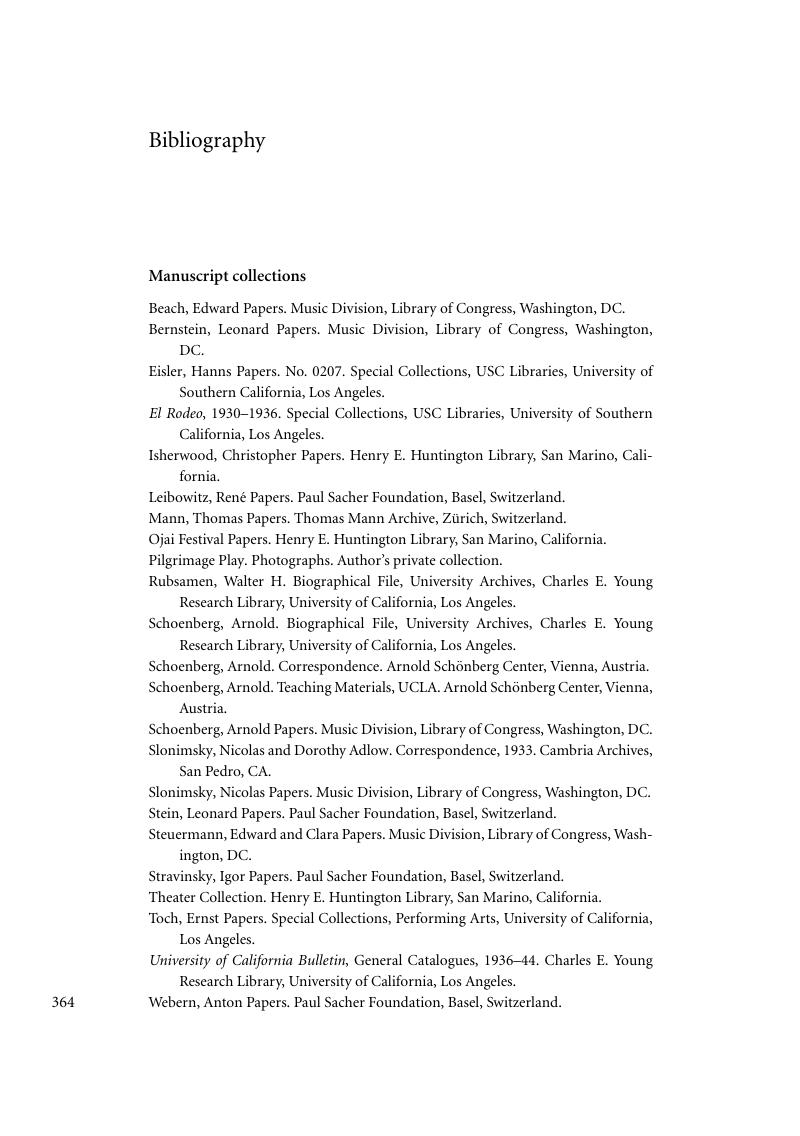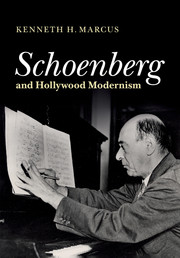Book contents
- Schoenberg and Hollywood Modernism
- Schoenberg and Hollywood Modernism
- Copyright page
- Dedication
- Contents
- Figures
- Maps
- Music examples
- Book part
- Glossary
- Map
- Introduction
- Part I Modernism in Southern California, 1913–1944
- Part II The private and public spheres, 1936–1951
- Conclusion
- APPENDICES
- Notes
- Bibliography
- Index
- References
Bibliography
Published online by Cambridge University Press: 18 December 2015
- Schoenberg and Hollywood Modernism
- Schoenberg and Hollywood Modernism
- Copyright page
- Dedication
- Contents
- Figures
- Maps
- Music examples
- Book part
- Glossary
- Map
- Introduction
- Part I Modernism in Southern California, 1913–1944
- Part II The private and public spheres, 1936–1951
- Conclusion
- APPENDICES
- Notes
- Bibliography
- Index
- References
Summary

- Type
- Chapter
- Information
- Schoenberg and Hollywood Modernism , pp. 364 - 388Publisher: Cambridge University PressPrint publication year: 2016



